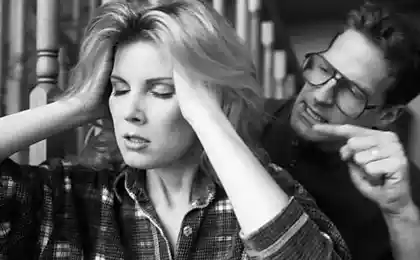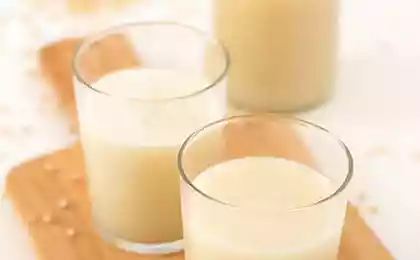152
All the most interesting about the production of microchips, which are smaller than a grain of rice
Modern. microchip It has reached unprecedented proportions. First, the size of these microcomputers is amazing. The smallest of the existing ones is several times smaller than a grain of rice. The length of each of its sides is exactly 0.3 mm.

Secondly, the functionality of such chips increases. Each new invention is superior to the previous one. Together, they can lead to a technological revolution. Today, no one is surprised by pet chipping anymore. But are people ready to incorporate microchips and why is it necessary? I suggest discussing this further in the article.
Microchip manufacturing has different goals. However, each of them can be equated with the simple and understandable expression “simplify life”. This is done by storing important information in one place. Or the chip can expand human capabilities to an unprecedented scale.
For many years, people have created microcomputers and changed their way of life. Sometimes you wonder what a man-made machine can do. In 1997, world chess champion Garry Kasparov lost the game to a computer. The game involved 480 chess chips. But it's not that. The chess player was amazed at how "non-computer" the enemy's steps were.

Peels Microchips are both fascinating and frightening. Because when you think about it, we don't even realize that they're all around us. Tell me, how long have you been to the theater? Watching a fresh movie in a cozy room would be impossible without chips.
The first digital micromirror was invented in 1987 by Larry Hornbeck. This microchip is used to direct light through the lens of the projector. These days, this technology is not only used in cinemas. Thanks to it, projector TVs, office projectors, and even tiny smartphone projectors work.

Today, none of us is surprised to store gigabytes of information in one phone. This was made possible by microchips. In 1997, Micronas engineers developed the chip and incorporated it into a small music player. With its help, more than 10 songs could be stored on flash memory. Then it created a furor in the technology market. And now we can walk down the street, switching in a smartphone or iPod thousands of musical compositions.
The production of microchips became a kind of competition among engineers. A new record was set by scientists from the University of Michigan. They created a microdevice that is several times smaller than a grain of rice. The computer is powered by a photoelectric converter. However, it can only be used in the future.
449550
The developers say that the microchip will open up many possibilities in the field of medicine. For example, it will be possible to create biological sensors of various kinds. Scientists call this device a real computer. First, it has a programmable environment. Secondly, it is equipped with special components for data input and output.
But, as they say, there is a nuance. Because the chip is too small, the information on it will not remain if it is disconnected from the power supply. However, I think it’s only a matter of time before we improve our existing technology.
Chipping animals Chipping animals It is a procedure that has been done around the world for more than 20 years. In Europe, for example, it is mandatory for all pet owners. The essence of chipping is to implant a special chip under the skin of a cat or dog that stores information about the animal. Simply put, this is a way of identifying pets.
By the way, chips are also used for wild animals that live in protected areas or on farms. Previously, they were branded mechanically, putting on the skin identification number and other data. However, this is not the most humane procedure, as it causes pain to the animal.

GettyImages Chipping is absolutely painless. To implant the chip under the skin, it takes no more than 15 minutes. The device itself is placed in a special biocompatible shell. Due to this, there is no risk that the pet’s body will begin to reject a foreign object under the skin.
The chip contains important information about the animal and its host. For example, data on vaccinations, place of registration and residence of the pet. As well as the contact number of the owner and the address where the person can be found. To find out all this information, it is enough to read it from the chip using a special scanner.
Not all pet owners like the idea of microchips. Many people think this is unnatural and wrong. They say that it is impossible to introduce a foreign object into the body of a beloved animal. The same goes for the human body. The talk of chipping people has been going on for a long time. And in Sweden, for example, mass chipping of the population began in 2018.
The principle is exactly the same. The chip should store the most important information about the person. And if he is in danger, doctors will be able to find out the data they need and save him. Chipping can really take healthcare to a new level of development.

GettyImages, however, has a downside to this process. It is said that the chip could become a handy tool for global surveillance of people, and in the future – control them. The chip is easily cracked if desired. This means that all the information stored on the device can be stolen.
In general, this technology has both pros and cons. But it scares me more than it attracts me. What do you think about microchips?
Photo in article

Secondly, the functionality of such chips increases. Each new invention is superior to the previous one. Together, they can lead to a technological revolution. Today, no one is surprised by pet chipping anymore. But are people ready to incorporate microchips and why is it necessary? I suggest discussing this further in the article.
Microchip manufacturing has different goals. However, each of them can be equated with the simple and understandable expression “simplify life”. This is done by storing important information in one place. Or the chip can expand human capabilities to an unprecedented scale.
For many years, people have created microcomputers and changed their way of life. Sometimes you wonder what a man-made machine can do. In 1997, world chess champion Garry Kasparov lost the game to a computer. The game involved 480 chess chips. But it's not that. The chess player was amazed at how "non-computer" the enemy's steps were.

Peels Microchips are both fascinating and frightening. Because when you think about it, we don't even realize that they're all around us. Tell me, how long have you been to the theater? Watching a fresh movie in a cozy room would be impossible without chips.
The first digital micromirror was invented in 1987 by Larry Hornbeck. This microchip is used to direct light through the lens of the projector. These days, this technology is not only used in cinemas. Thanks to it, projector TVs, office projectors, and even tiny smartphone projectors work.

Today, none of us is surprised to store gigabytes of information in one phone. This was made possible by microchips. In 1997, Micronas engineers developed the chip and incorporated it into a small music player. With its help, more than 10 songs could be stored on flash memory. Then it created a furor in the technology market. And now we can walk down the street, switching in a smartphone or iPod thousands of musical compositions.
The production of microchips became a kind of competition among engineers. A new record was set by scientists from the University of Michigan. They created a microdevice that is several times smaller than a grain of rice. The computer is powered by a photoelectric converter. However, it can only be used in the future.
449550
The developers say that the microchip will open up many possibilities in the field of medicine. For example, it will be possible to create biological sensors of various kinds. Scientists call this device a real computer. First, it has a programmable environment. Secondly, it is equipped with special components for data input and output.
But, as they say, there is a nuance. Because the chip is too small, the information on it will not remain if it is disconnected from the power supply. However, I think it’s only a matter of time before we improve our existing technology.
Chipping animals Chipping animals It is a procedure that has been done around the world for more than 20 years. In Europe, for example, it is mandatory for all pet owners. The essence of chipping is to implant a special chip under the skin of a cat or dog that stores information about the animal. Simply put, this is a way of identifying pets.
By the way, chips are also used for wild animals that live in protected areas or on farms. Previously, they were branded mechanically, putting on the skin identification number and other data. However, this is not the most humane procedure, as it causes pain to the animal.

GettyImages Chipping is absolutely painless. To implant the chip under the skin, it takes no more than 15 minutes. The device itself is placed in a special biocompatible shell. Due to this, there is no risk that the pet’s body will begin to reject a foreign object under the skin.
The chip contains important information about the animal and its host. For example, data on vaccinations, place of registration and residence of the pet. As well as the contact number of the owner and the address where the person can be found. To find out all this information, it is enough to read it from the chip using a special scanner.
Not all pet owners like the idea of microchips. Many people think this is unnatural and wrong. They say that it is impossible to introduce a foreign object into the body of a beloved animal. The same goes for the human body. The talk of chipping people has been going on for a long time. And in Sweden, for example, mass chipping of the population began in 2018.
The principle is exactly the same. The chip should store the most important information about the person. And if he is in danger, doctors will be able to find out the data they need and save him. Chipping can really take healthcare to a new level of development.

GettyImages, however, has a downside to this process. It is said that the chip could become a handy tool for global surveillance of people, and in the future – control them. The chip is easily cracked if desired. This means that all the information stored on the device can be stolen.
In general, this technology has both pros and cons. But it scares me more than it attracts me. What do you think about microchips?
Photo in article
Barbecue in sweeps are not suitable for an exquisite snack from eggs, showing in stages how to cook it
I plant a garden in May only according to the lunar calendar, the pledge of a generous harvest.





















